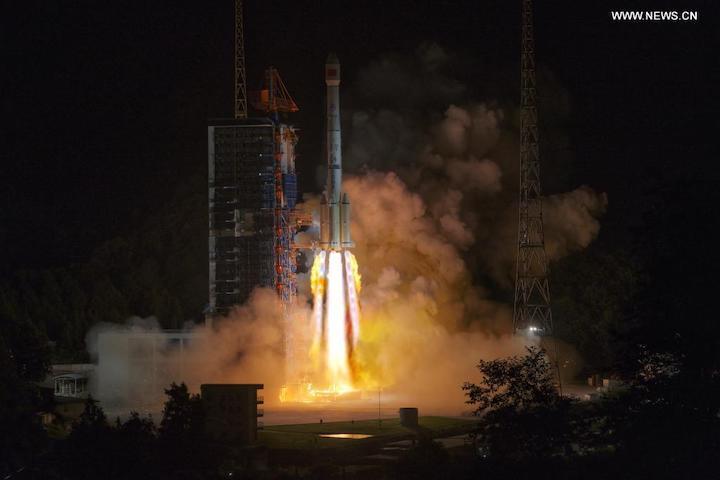25.08.2021

China launched two test payloads Tuesday for a planned constellation of internet satellites, a step that could lead to launches of thousands more Chinese spacecraft to match similar commercial networks already being deployed by SpaceX and OneWeb.
The two pathfinder spacecraft launched aboard a Long March 2C rocket, which flew for the first time with a wider payload fairing to provide more volume for launches of larger numbers of satellites on a single mission.
The Long March 2C rocket lifted off at 7:15 a.m. EDT (1115 GMT; 7:15 p.m. Beijing time) Tuesday from the Jiuquan launch base in the Inner Mongolia region of northwestern China, according to the China Aerospace Science and Technology Corp., or CASC, the country’s top state-owned space contractor.
U.S. military tracking data indicated the rocket’s Yuanzheng 1S upper stage delivered the two satellites, known by the Chinese acronym RSW, into an orbit about 680 miles (1,100 kilometers) above Earth with an inclination of 89.4 degrees to the equator.
An unidentified third satellite, also with a communications tech demo mission, was also on-board the Long March 2C rocket.

China is planning to launch a constellation of up to 13,000 satellites to provide global internet connectivity, according to regulatory filings with the International Telecommunication Union.
SpaceX has the approval of the Federal Communications Commission to deploy a network of 12,000 Starlink internet satellites, and the company has signaled plans to launch 30,000 additional spacecraft for additional broadband coverage.
More than 1,700 Starlink satellites have already been launched by SpaceX.
OneWeb, a London-based company, has launched 288 satellites of a planned fleet of 648 spacecraft. Like SpaceX, OneWeb has preliminary plans to launch thousands more satellites if market demand materializes.
Amazon’s Kuiper satellite internet network is in an earlier stage development, and the European Union is studying its own satellite communications mega-constellation.
In a sign that China is making plans for the large-scale deployment of a satellite constellation, the Long March 2C rocket launched Tuesday debuted a new 13.8-foot-diameter (4.2-meter) payload fairing. The nose shroud is wider than fairings flown on past Long March 2C rockets, giving each launcher a larger payload volume to accommodate more satellites on a single mission.
The Long March 2C rocket also launched with a tube-shaped multi-satellite adapter structure inside its payload fairing.
On future missions, the support tube will have mounting points for multiple spacecraft, similar to mechanisms used by OneWeb and other companies to deploy numerous satellites.
Quelle: SN
+++
China launches new communication technology experiment satellite

A new communication technology experiment satellite is launched at 11:41 p.m. (Beijing Time) by a Long March-3B carrier rocket at the Xichang Satellite Launch Center in southwest China's Sichuan Province, Aug. 24, 2021. China successfully launched a new communication technology experiment satellite from the Xichang Satellite Launch Center in southwest China's Sichuan Province Tuesday. (Photo by Guo Wenbin/Xinhua)
XICHANG, China successfully launched a new communication technology experiment satellite from the Xichang Satellite Launch Center in southwest China's Sichuan Province Tuesday.
The satellite was launched at 11:41 p.m. (Beijing Time) by a Long March-3B carrier rocket and entered the planned orbit successfully.
This launch marked the 386th mission for the Long March series carrier rockets. Enditem
Quelle: Xinhua
